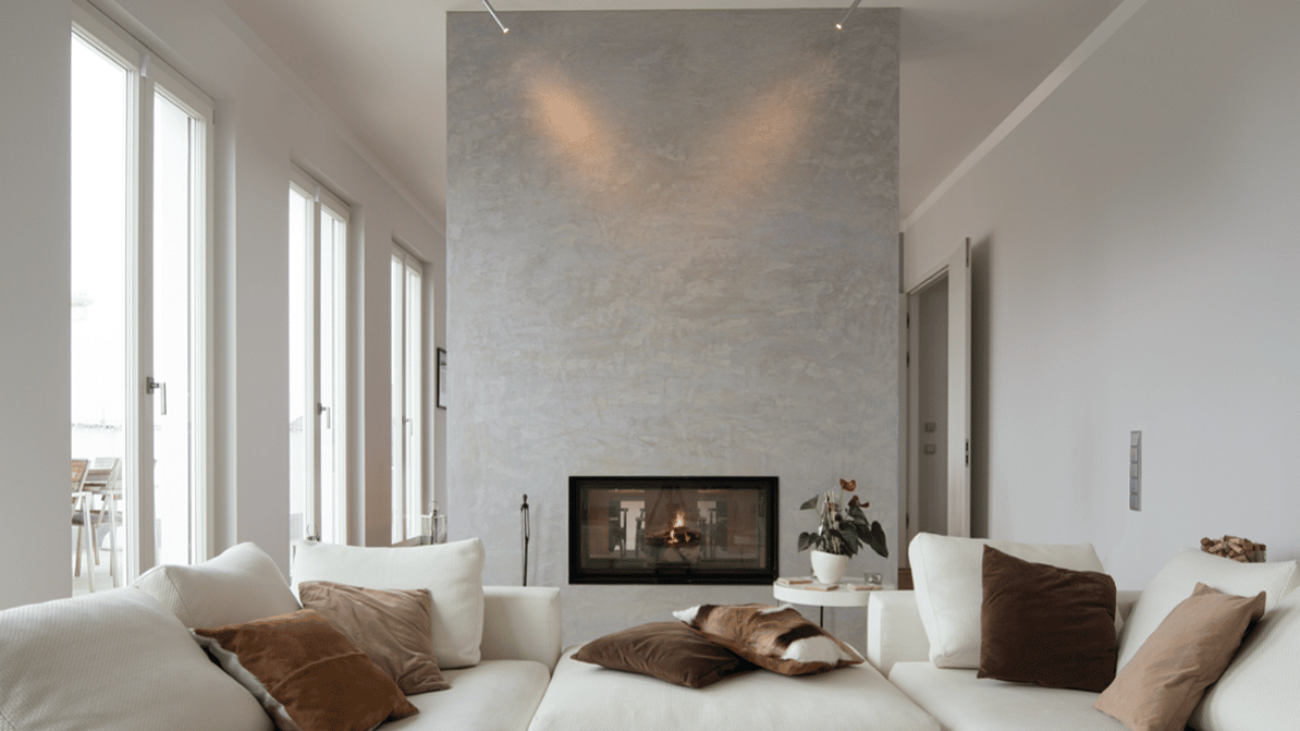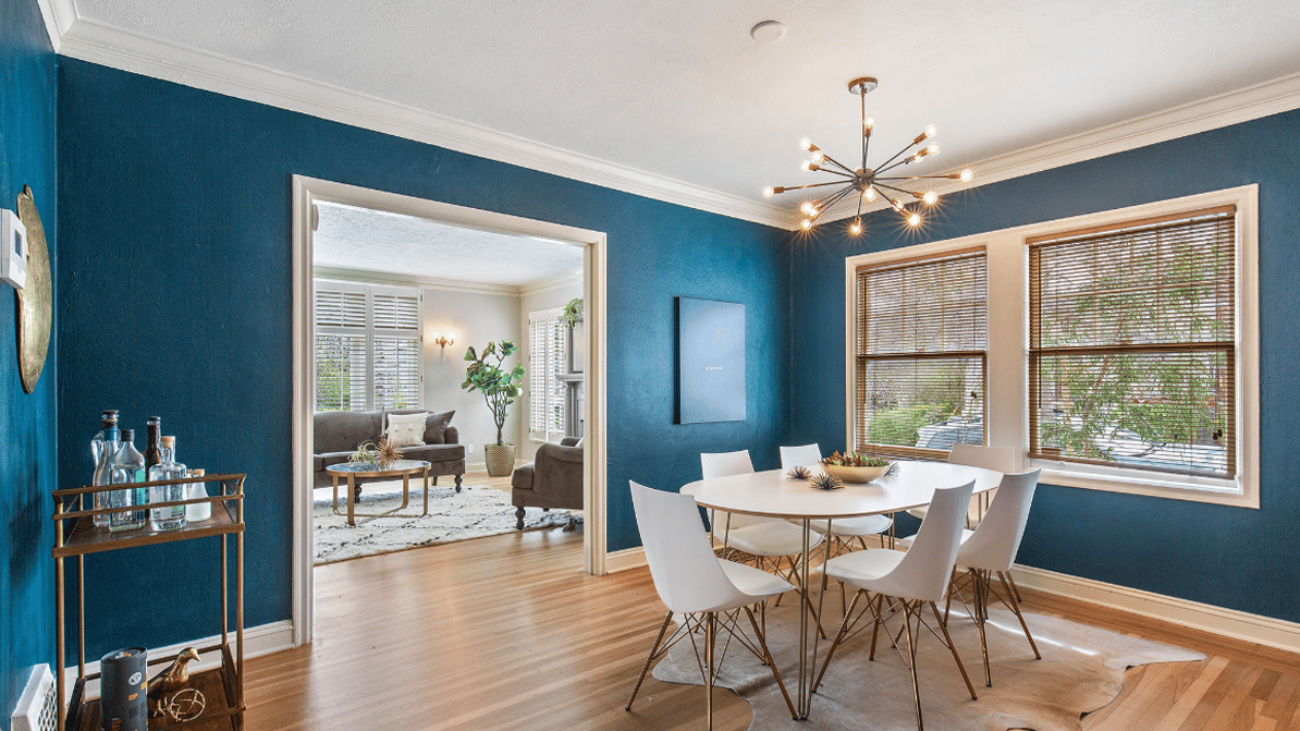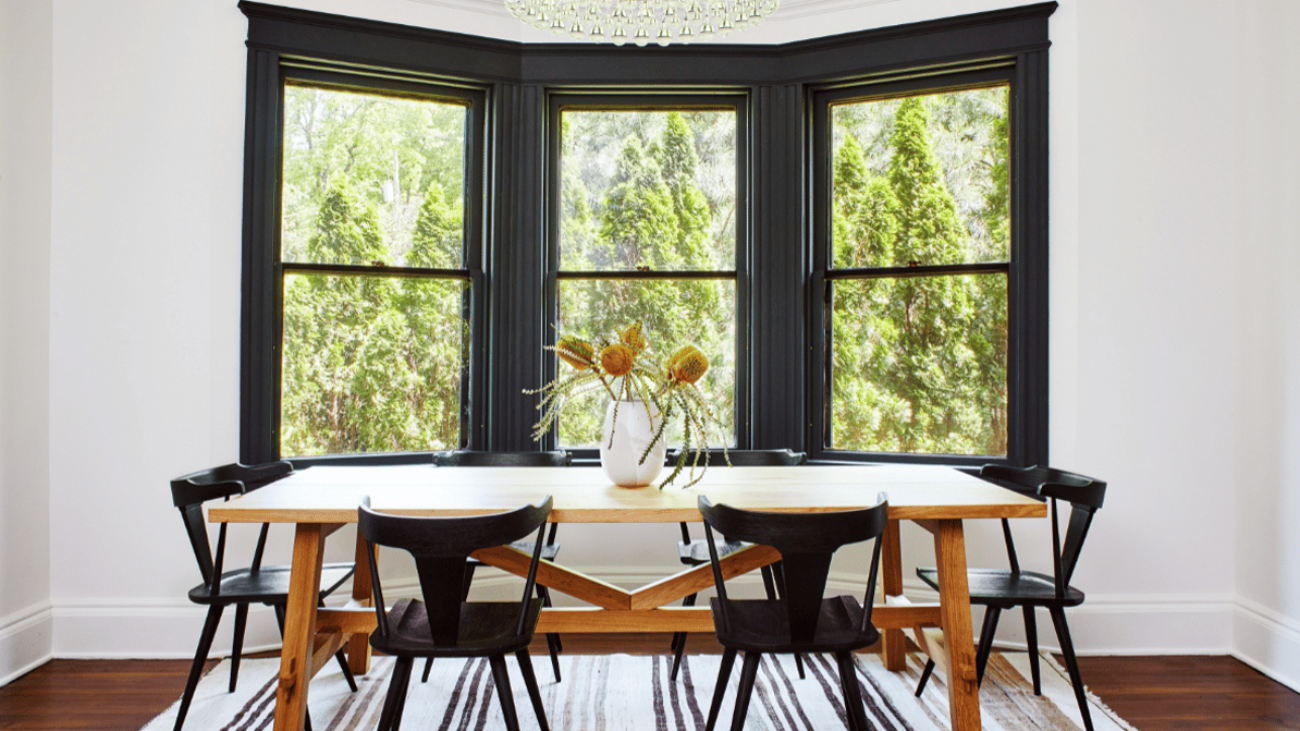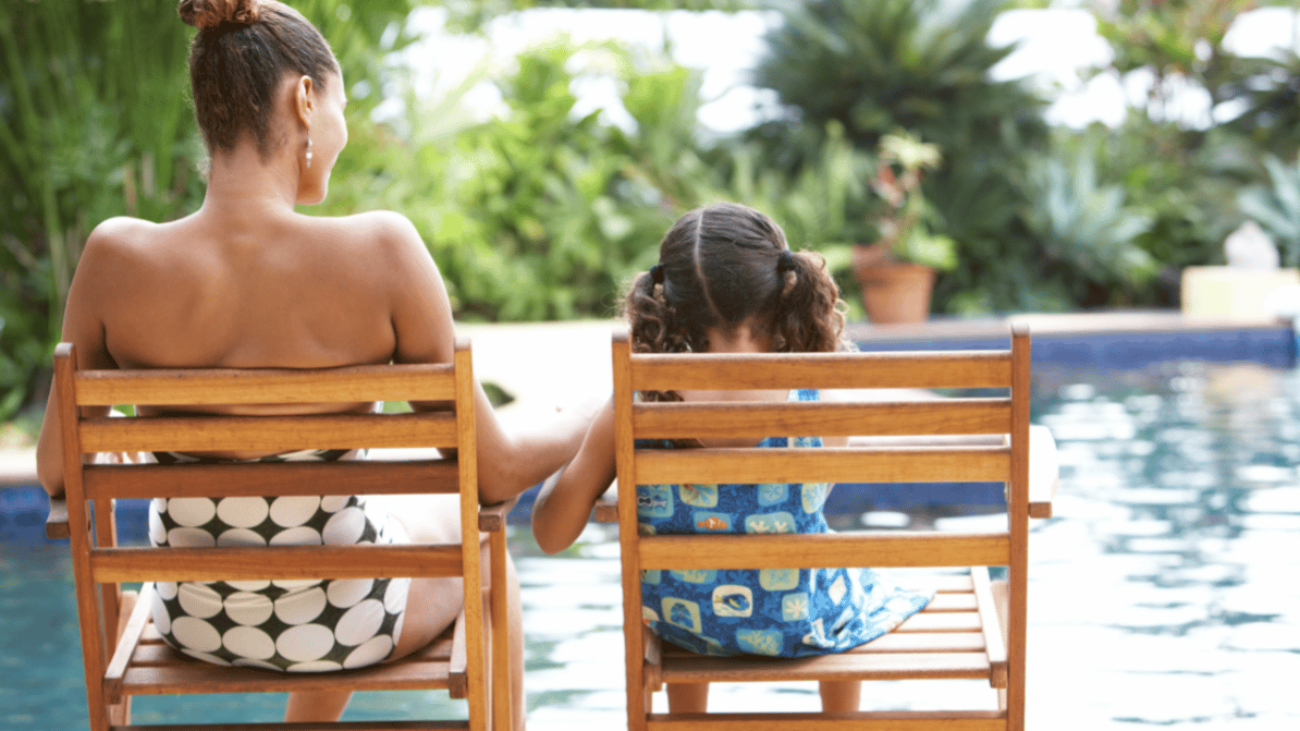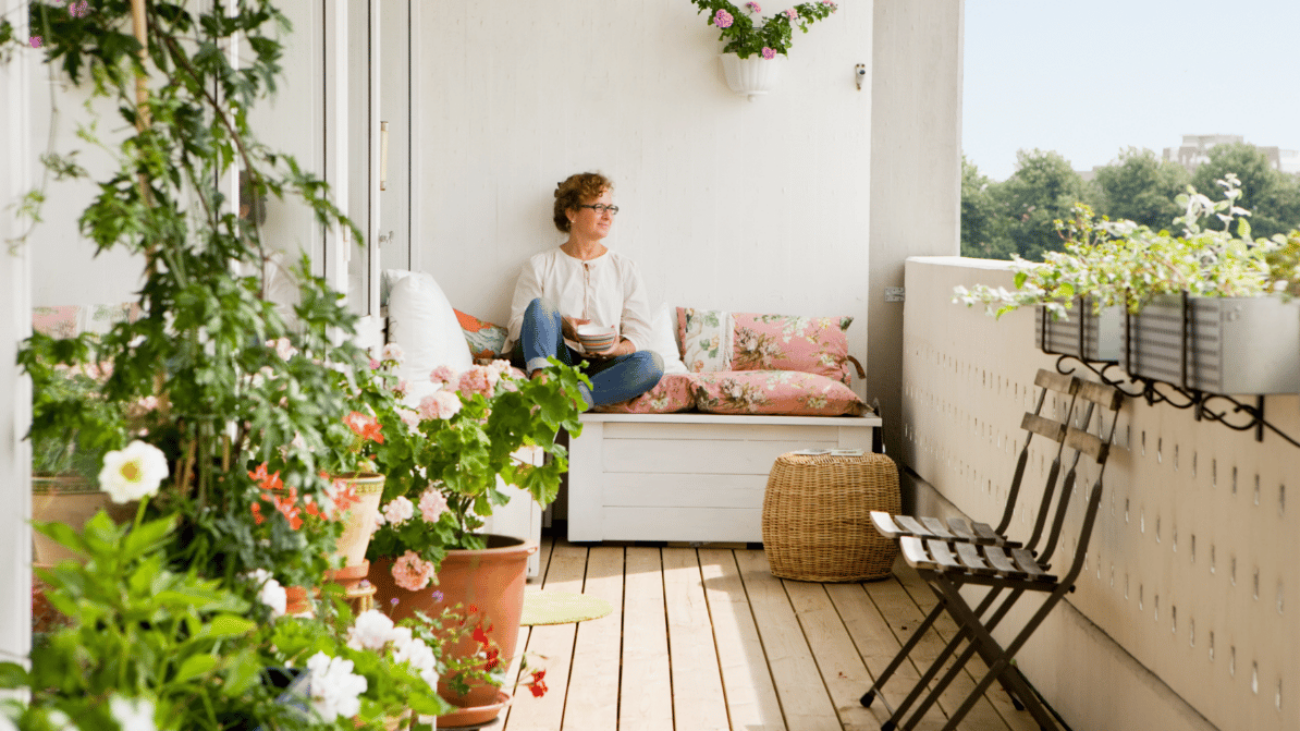Because the wrong paint job can seriously wreck your home.
Picking a color for one room can be challenging enough. But picking a palette for your whole house?
That feels daunting. Coordinate your colors too much, you’ll end up matchy matchy. Don’t coordinate your colors enough, you’ll end up tacky tacky.
And that not only messes with your mojo, it can be bad for home value. Because ugly colors turn off buyers, and you may not get the best price if you ever sell.
But you can end up with colors you’ll love that’ll also enhance your home’s value — by following these tips from two designers who recently re-colored two different houses.
[/et_pb_text][et_pb_text _builder_version=”4.9.4″ _module_preset=”default”]First, Find Your Inspiration
[/et_pb_text][et_pb_text _builder_version=”4.9.4″ _module_preset=”default”]Rather than picking a palette from a big box store’s paint brochures or from whatever Pinterest’s algorithm serves you up, look into your own soul. Or, at least, into your closet or out your window.
“Designers always have a starting point,” says interior designer Maria Killam, who also writes the “Colour Me Happy” blog.
It might be a favorite sweater or a photo of your favorite beach spot. Or a pillow, Killam says.
Or it could be a feeling you want your home to have: cheery, bright, dramatic, cozy … whatever feels right to you.
For Killam, it was a feeling of “fresh.” So she used a mix of flowers and foliage to come up with her inspiration:
For HomePolish designer Melissa Mascara, wallpaper patterns inspired her palette.
[/et_pb_text][et_pb_text _builder_version=”4.9.4″ _module_preset=”default” locked=”off”]Learn (Just a Bit) About Undertones
[/et_pb_text][et_pb_text _builder_version=”4.9.4″ _module_preset=”default”]Paint color undertones have the power to make or break your whole-house color palette — and you’re not alone if your response to that is, “Under-whats, now?”
If you’ve ever had a beige that looks just right in the can, but turns an ugly shade of pink on the wall, it’s a red undertone to blame. And it happens because undertones are almost impossible to see in the can.
But you need to find them because the undertones in your home’s cabinets and counters can bring out the undertones you can’t see in your palette — like that ugly pink beige mentioned above. White cabinets with a green undertone could be the culprit that changed it to something sickly.
[/et_pb_text][et_pb_text _builder_version=”4.9.4″ _module_preset=”default” locked=”off”]Start With a Neutral And Two Other Colors
[/et_pb_text][et_pb_text _builder_version=”4.9.4″ _module_preset=”default”]When choosing a palette, start with three colors. Three is a balanced number, and it gives just enough visual interest without overwhelming you.
Choose a neutral shade and add two more tones, all of which should come directly from your inspiration piece. As you put your palette together, keep in mind your neutral color should be in every room. That’s what helps pull the whole-house palette together.
Killam chose white (Sherwin-Williams Shoji White) as her neutral:
And Mascara chose shades of brown, which are reflected in the wood floors, doors, and trim on the built-in shelves:
“The trend isn’t the one accent wall, like it was in the ’80s, or painting each room a different color like we did in the ’90s,” says Killam. “Now we’re choosing a main neutral to go throughout the house.”
[/et_pb_text][et_pb_text _builder_version=”4.9.4″ _module_preset=”default” locked=”off”]Add More Colors
[/et_pb_text][et_pb_text _builder_version=”4.9.4″ _module_preset=”default”]Of course, you don’t have to limit yourself to three colors.
Mascara ended up picking seven colors:
While Killam went with six hues, including a customized color (yep, you can do that — most any paint store will help you):
[/et_pb_text][et_pb_text _builder_version=”4.9.4″ _module_preset=”default” locked=”off”]Repeat Colors From Room to Room
[/et_pb_text][et_pb_text _builder_version=”4.9.4″ _module_preset=”default”]Designers create the coordinated look of a whole-house palette through repetition.
“Use any color at least twice,” says Mascara. “For example, the dominant wall color in one space might become an accent color in the next.” Mascara followed this rule by using turquoise paint in the home office and turquoise patterned wallpaper in the dining room.
Note that having a six- or seven-color palette does not give you license to cram all the colors into every room in equal measure — or that each of seven rooms should be swallowed whole by a single shade. Yikes. Distribute your palette throughout the house in a balanced way.
[/et_pb_text][et_pb_text _builder_version=”4.9.4″ _module_preset=”default”]Test Lighting and Sight Lines
[/et_pb_text][et_pb_text _builder_version=”4.9.4″ _module_preset=”default”]Before committing to a palette, consider two more elements: lighting and sight lines (how the hues look when you see them from other rooms).
Rather than choosing paint by looking only at small swatches, buy sample-sized cans of your colors and paint them on poster boards.
Place your poster-sized paint samples so they’re visible as you walk through the house. Then look down the hallway and from room to room to see how the colors play off each other. And notice how the light affects the colors, too.
In her project, Mascara wanted to maximize the home’s light, so she chose paint accordingly. “Many of the spaces in our project didn’t have the best natural light,” she says, “so we brightened the walls in those spaces and kept the dark accent colors to a minimum.”
You may need to relocate certain colors, or even choose another color from your inspiration palette, to find the right flow. But once you’ve done so, you’ll be all set to put your whole-house palette into play.
[/et_pb_text][et_pb_text _builder_version=”4.9.4″ _module_preset=”default”]
